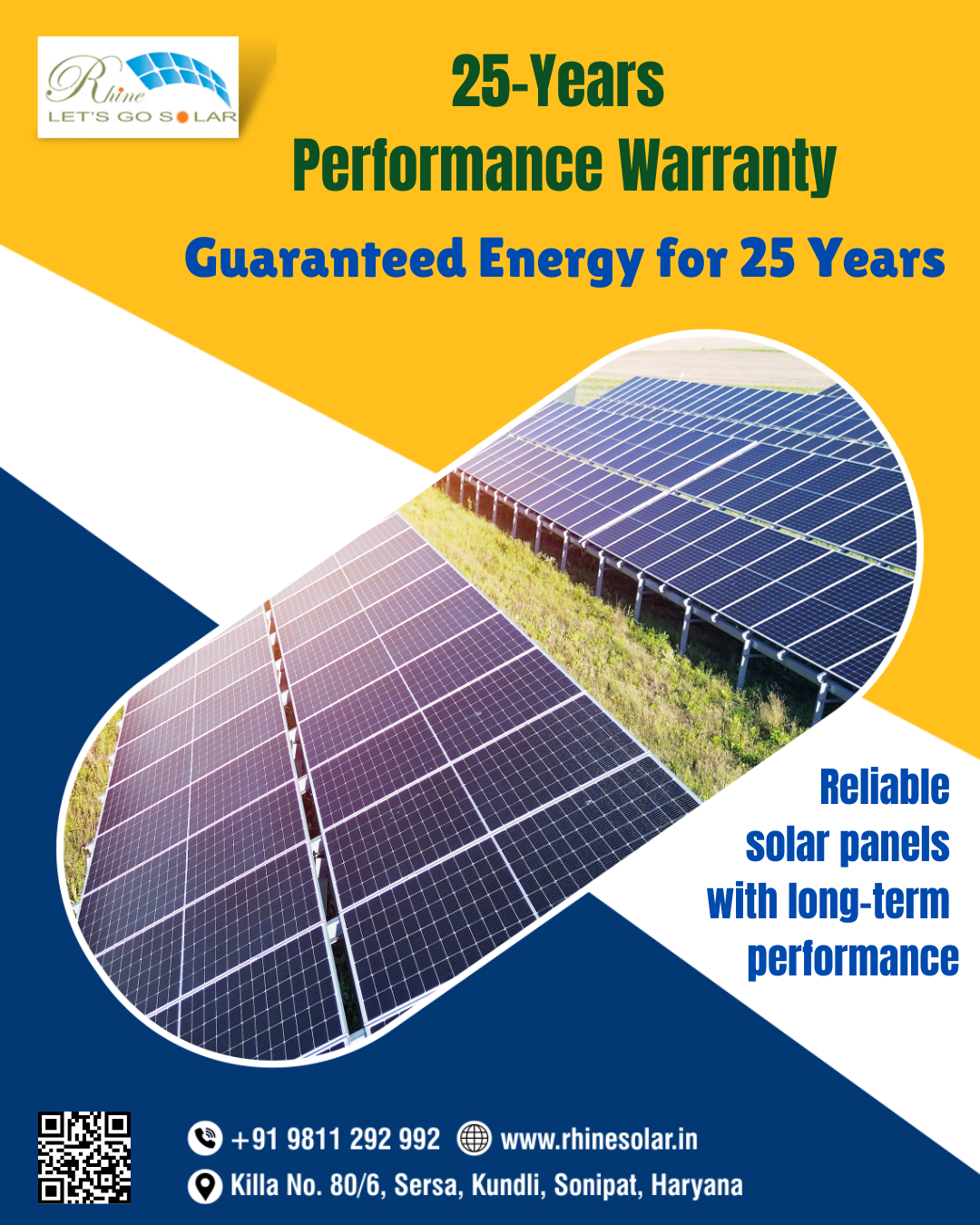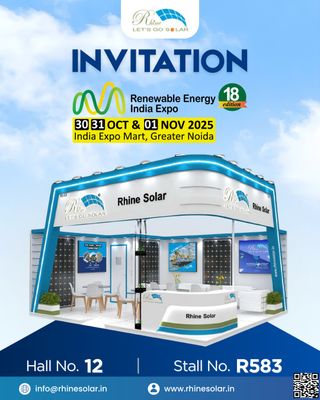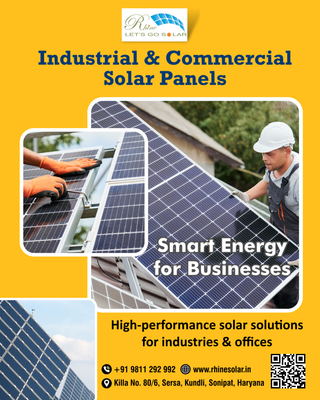Mono vs. Polycrystalline Solar Panels: Which One Should You Choose?
₹0 INR
Sold out
Learn the key differences, efficiency, cost, and which type is best for your home or business.
Sold out
Save this product for later
Mono vs. Polycrystalline Solar Panels: Which One Should You Choose?
Product Details
If you’re considering switching to solar energy, one of the first decisions you’ll need to make is which type of solar panel to choose. The two most common options are monocrystalline and polycrystalline solar panels.
But which one is better for your home or business?
In this blog, we’ll compare monocrystalline vs. polycrystalline solar panels, covering:
✅ Efficiency
✅ Cost
✅ Lifespan & Durability
✅ Performance in Different Climates
✅ Which is Best for You?
By the end, you’ll be able to confidently choose the right solar panel for your needs!
1. What Are Monocrystalline and Polycrystalline Solar Panels?
Both monocrystalline (mono) and polycrystalline (poly) solar panels are made from silicon—the most commonly used material in solar energy. However, their manufacturing process and efficiency differ.
|
Feature |
Monocrystalline Panels |
Polycrystalline Panels |
|
Appearance |
Black, sleek |
Blue, speckled |
|
Efficiency |
18% - 22% |
15% - 18% |
|
Lifespan |
25-30 years |
20-25 years |
|
Performance in Low Light |
High |
Moderate |
|
Space Requirement |
Requires fewer panels |
Requires more panels |
|
Cost |
Expensive |
More affordable |
Let’s explore each type in detail!
2. Monocrystalline Solar Panels (High Efficiency, Higher Cost)
What Are They?
Monocrystalline solar panels are made from a single crystal of silicon, allowing electrons to move more freely, making them highly efficient in converting sunlight into electricity.
Pros:
✅ Higher Efficiency (18-22%) – Generates more power per square meter.
✅ Better Performance in Low Light & High Temperatures – Ideal for cloudy weather and hot climates.
✅ Longer Lifespan (25-30 years) – Durable and reliable.
✅ Requires Less Space – Suitable for smaller rooftops.
Cons:
❌ Higher Cost – More expensive due to complex manufacturing.
❌ More Silicon Waste in Production – Less eco-friendly manufacturing process.
Best For:
🏡 Homes with Limited Roof Space – Fewer panels needed for high output.
🏢 Businesses Looking for Maximum Efficiency & Long-Term Savings.
3. Polycrystalline Solar Panels (Affordable, Moderate Efficiency)
What Are They?
Polycrystalline panels are made from multiple silicon crystals melted together, making them cheaper to produce but slightly less efficient than monocrystalline panels.
Pros:
✅ More Affordable – Lower cost than monocrystalline panels.
✅ Good Efficiency (15-18%) – Suitable for most energy needs.
✅ Eco-Friendly Manufacturing – Less silicon waste.
Cons:
❌ Lower Efficiency Than Monocrystalline – Requires more panels for the same output.
❌ Less Effective in Low Light & High Temperatures.
❌ Shorter Lifespan (20-25 years).
Best For:
🏡 Budget-Conscious Homeowners – A cost-effective option for residential use.
🏢 Businesses with Large Rooftops – More space allows for extra panels.
4. Key Differences: Mono vs. Polycrystalline Solar Panels
1️⃣ Efficiency & Performance
- Monocrystalline panels are more efficient (18-22%), producing more power per square meter.
- Polycrystalline panels have lower efficiency (15-18%), meaning they require more panels to generate the same amount of electricity.
✅ Winner: Monocrystalline panels (better efficiency)
2️⃣ Cost & Affordability
- Monocrystalline panels are more expensive (₹30-₹50 per watt).
- Polycrystalline panels are cheaper (₹20-₹35 per watt).
✅ Winner: Polycrystalline panels (more budget-friendly)
3️⃣ Lifespan & Durability
- Monocrystalline panels last 25-30 years.
- Polycrystalline panels last 20-25 years.
✅ Winner: Monocrystalline panels (longer lifespan)
4️⃣ Space Requirement
- Monocrystalline panels require less space due to higher efficiency.
- Polycrystalline panels need more space to generate the same power.
✅ Winner: Monocrystalline panels (ideal for small rooftops)
5️⃣ Performance in Different Climates
- Monocrystalline panels perform better in hot climates and low light conditions.
- Polycrystalline panels are less efficient in high temperatures.
✅ Winner: Monocrystalline panels (better for varied weather conditions)
5. Which Solar Panel Should You Choose?
For Homeowners
- Best Choice: Monocrystalline panels (high efficiency, long-term savings).
- Budget Option: Polycrystalline panels (lower initial cost, decent performance).
For Businesses
- Best for Maximum Output: Monocrystalline panels (higher energy production, fewer panels).
- Best for Cost-Saving: Polycrystalline panels (affordable, good performance).
For Large-Scale Projects
- Best for Solar Farms: Polycrystalline panels (low-cost, large-scale efficiency).
- Best for Space-Constrained Areas: Monocrystalline panels (high output in limited space).
💡 Tip: If your budget allows, investing in monocrystalline panels provides better long-term benefits.
6. Additional Factors to Consider
🔹 Available Roof Space – If space is limited, go for monocrystalline panels.
🔹 Budget – If you want an affordable solution, choose polycrystalline panels.
🔹 Energy Needs – If you need maximum efficiency, monocrystalline is the better choice.
🔹 Climate Conditions – If you live in a hot or cloudy region, monocrystalline panels perform better.
Conclusion
Both monocrystalline solar panels and polycrystalline solar panels have their advantages. If you want higher efficiency, durability, and better performance, go for monocrystalline panels. If you’re looking for an affordable solution with decent efficiency, polycrystalline panels are a great option.
🌞 Looking for expert solar panel installation? Contact Rhine Solar Limited today for the best solar solutions for your home or business!You May Also Like
Rhine 36 Cell Series 50wp SL
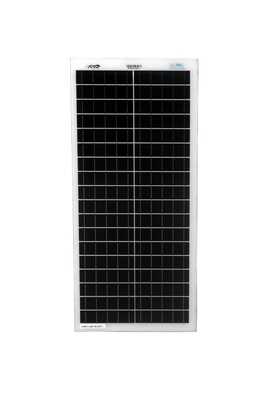
50 Watt 36Cell Monocrystalline Solar Panel Street Light
50 Watt 36Cell Monocrystalline Solar Panel Street Light
was ₹6,000 INR
Save ₹3,250 INR
₹2,750 INR
Out of stock
Rhine 36 Cell Series 100wp
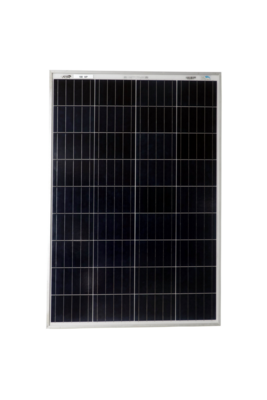
100 Watt 36 Cell Solar Panel Buy Polycrystalline Modules
100 Watt 36 Cell Solar Panel Buy Polycrystalline Modules
was ₹9,500 INR
Save ₹3,000 INR
₹6,500 INR
Out of stock
Display prices in:INR
